BHL at 10
Explore our collection celebrating 10 years of inspiring discovery through free access to biodiversity knowledge.
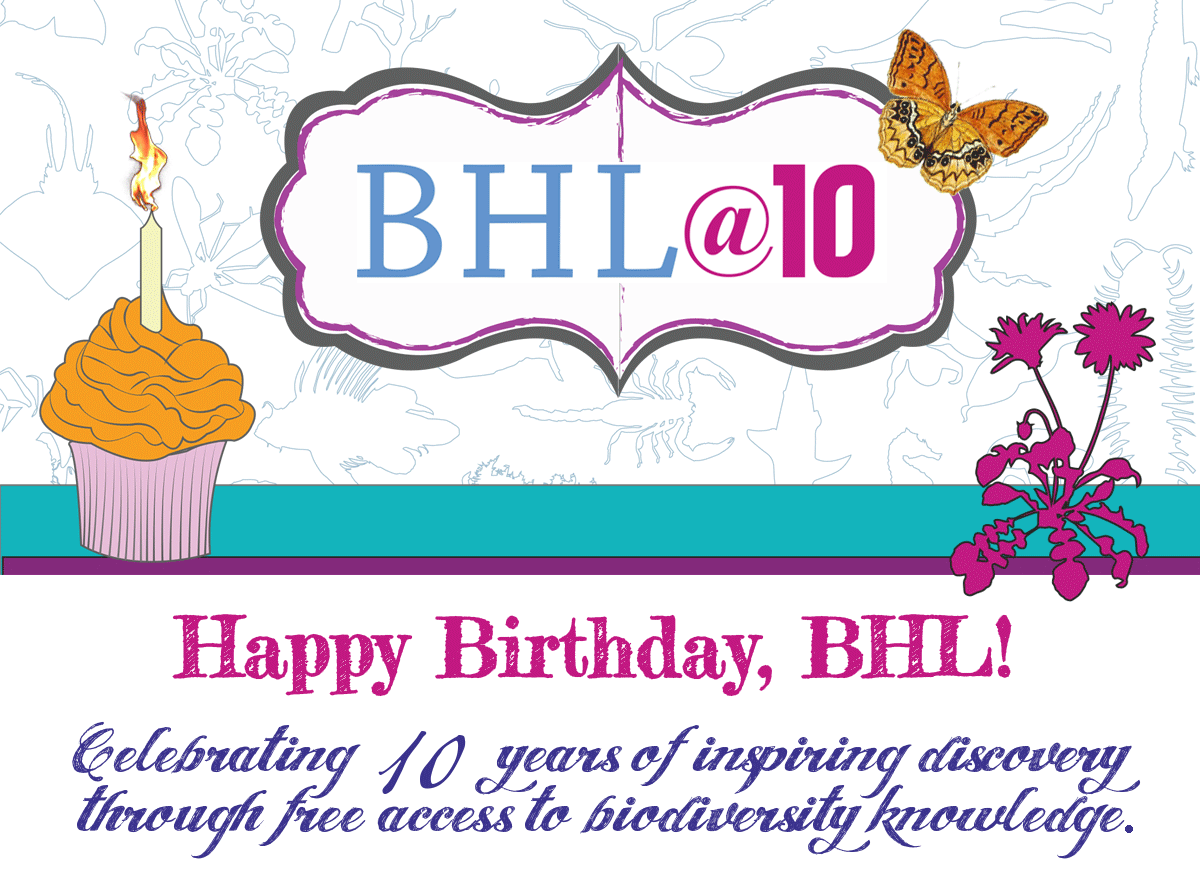
Since 2006, the Biodiversity Heritage Library has transformed the way scientists, researchers, and librarians around the world access knowledge about and study life on Earth. In order to document Earth's species and understand the complexities of swiftly-changing ecosystems in the midst of a major extinction crisis and widespread climate change, scientists need something that no single library can provide - access to the world's collective knowledge about biodiversity. Beyond the scientific realm, such information also allows scholars to answer complex research questions related to human exploration, culture, and the history of science. Through a worldwide partnership of natural history and botanical libraries, BHL has become the largest open access digital library for biodiversity literature, allowing everyone, everywhere to freely access library collections from across global and empowering research like never before. Come with us as we celebrate 10 years of inspiring discovery through free access to biodiversity knowledge.
We're kicking off our year-long celebrations with our #BHLat10 campaign, 11-15 April 2016, celebrating our history, growth, collections, and impact on the global science community. Content will be published through our blog, Twitter, Facebook, Flickr, and Pinterest. Be sure to follow #BHLat10 to join the celebrations and explore this webpage to find out more!
Table of Contents
BHL Transforms Biodiversity Research
BHL has been transforming biodiversity research for over 10 years.
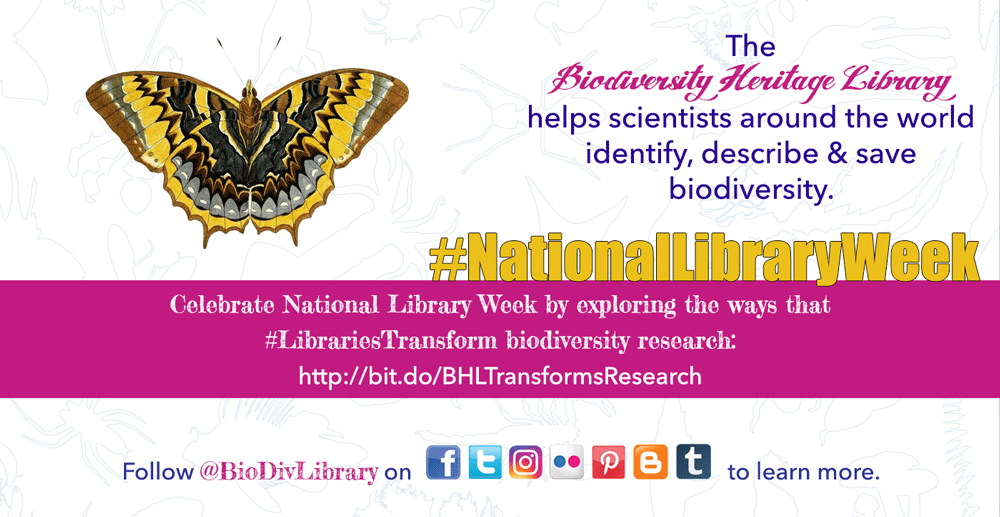
Since it first began in 2006, BHL has served over 4.9 million people in 240 countries and territories. Explore interviews with actual users to see how BHL supports science and education (and even humanities research in history and art!): BHL User Testimonials
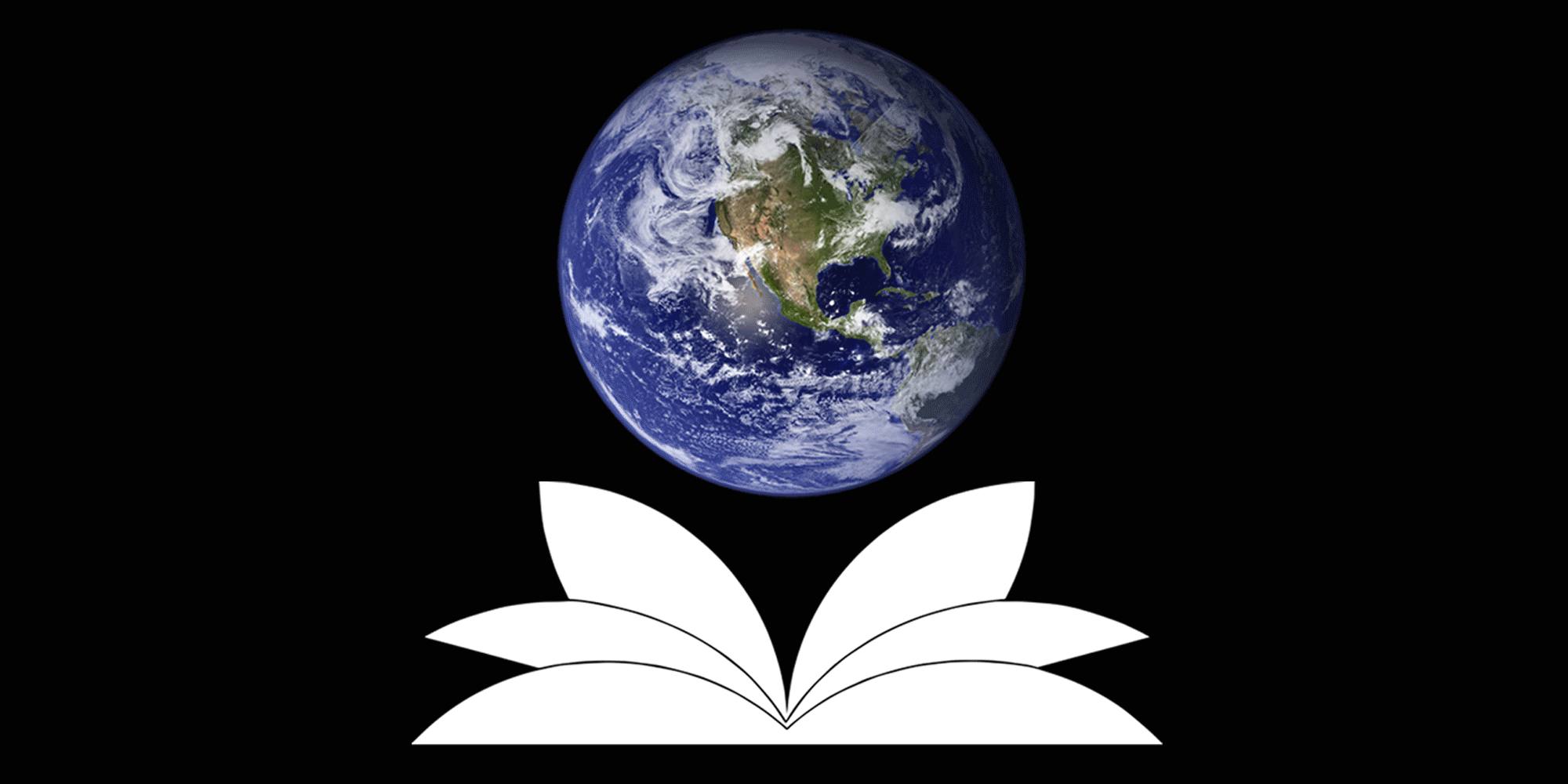
BHL provides scientists with information that is critical to documenting and conserving life on Earth. Find out how BHL helps save biodiversity.
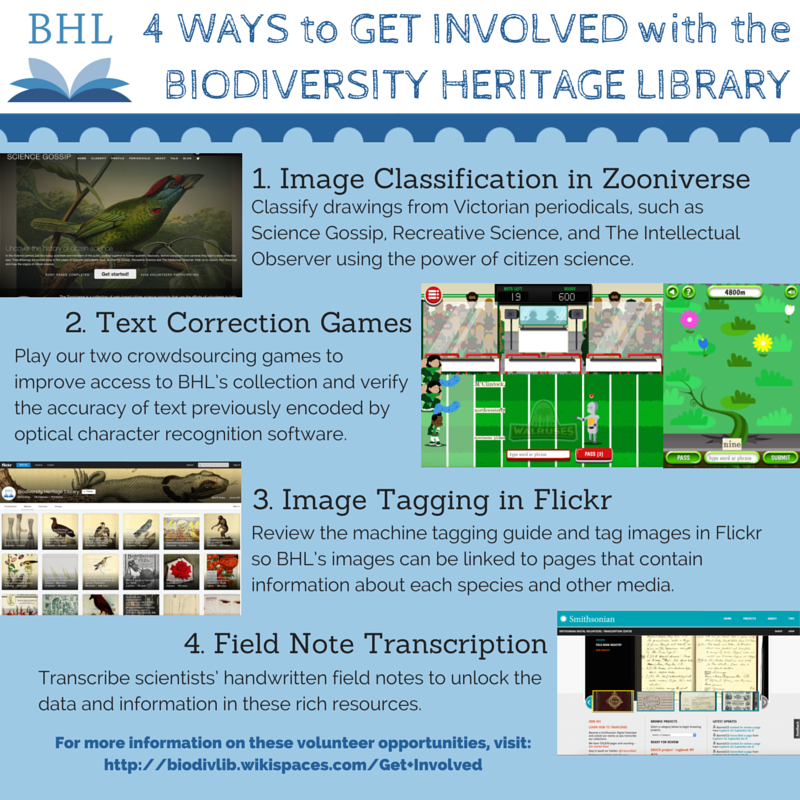
By embracing citizen science, #LibrariesTransform access to books and the invaluable information they contain. See how you can get involved with BHL today through citizen science and help researchers, scientists and people around the world access critical information about Earth's biodiversity.
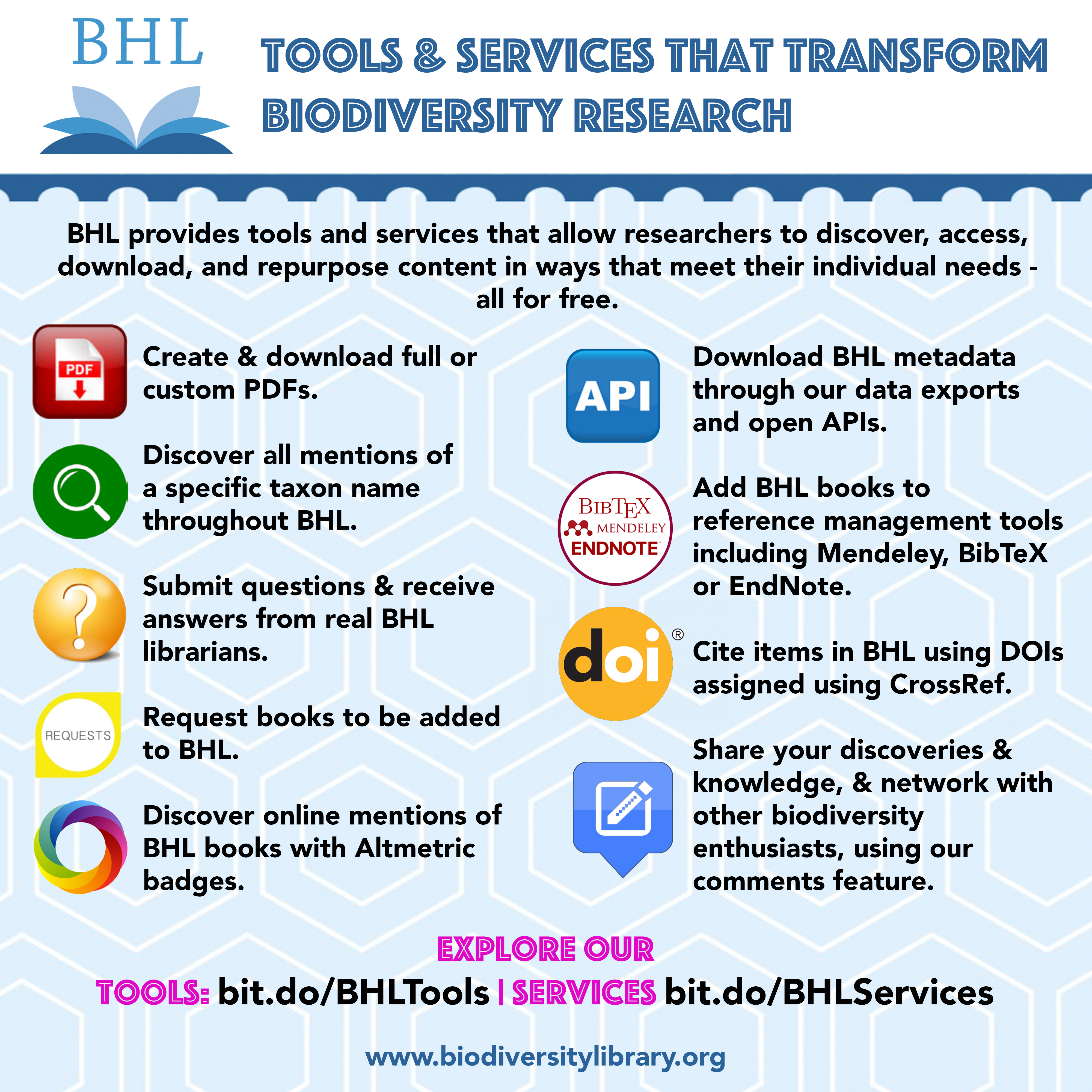
One of the ways that #LibrariesTransform research is by providing users with tools and services that allow them to discover, access, download, and repurpose content in ways that meet their individual needs. Explore BHL's tools and services.
To help ensure that BHL continues to transform biodiversity research for decades to come, we've launched a CafePress store with products celebrating our 10th anniversary and featuring images from our collection. We've launched the store with a small selection of images from BHL, but we'll be expanding this selection in the future as we continue to develop our store. 100% of the proceeds that BHL receives from the sale of these products will be used to digitize more books for BHL. Check out the store today!
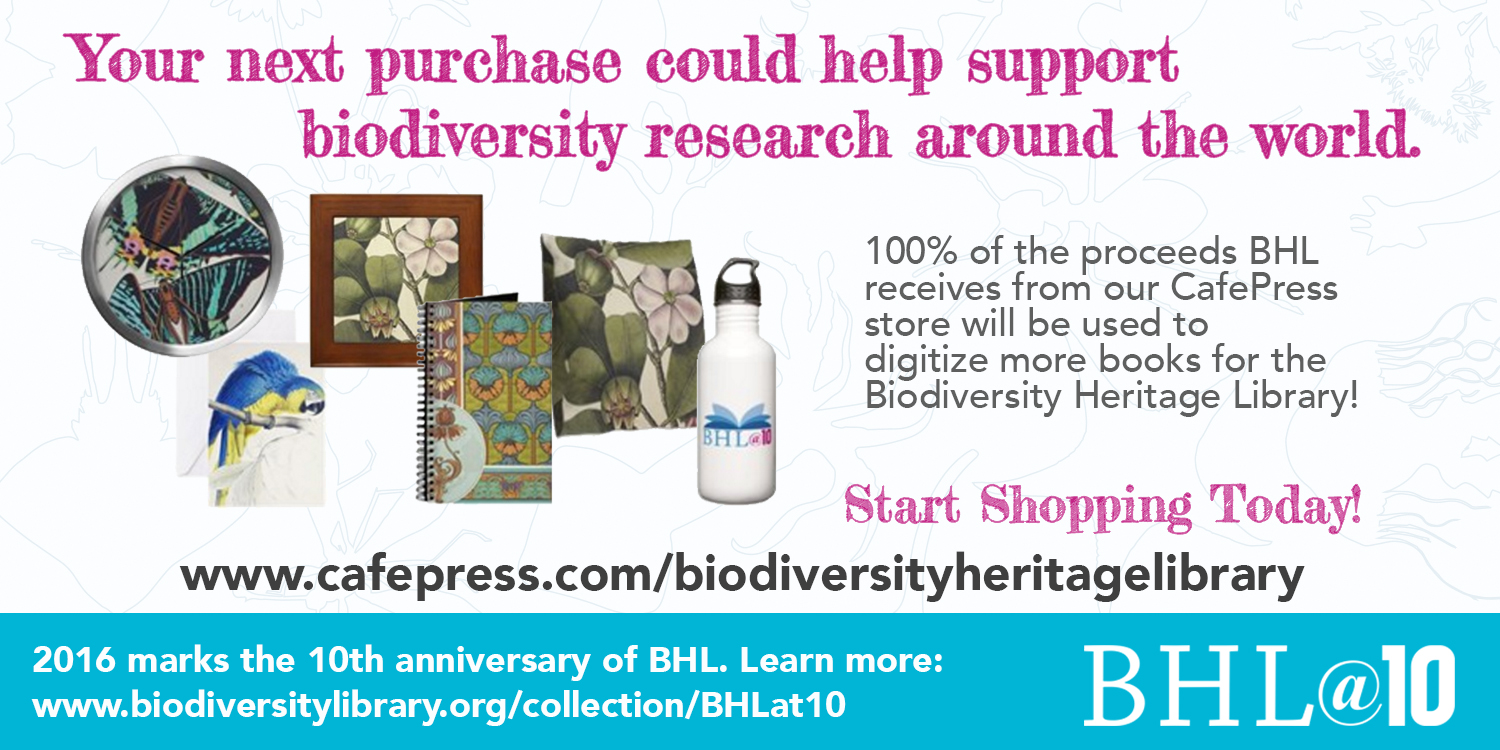
And if merchandise isn't your thing, but you want to help support BHL's future, consider making a tax-deductible gift to help us continue to support science and research around the world.
Celebrating BHL at 10 through Collections
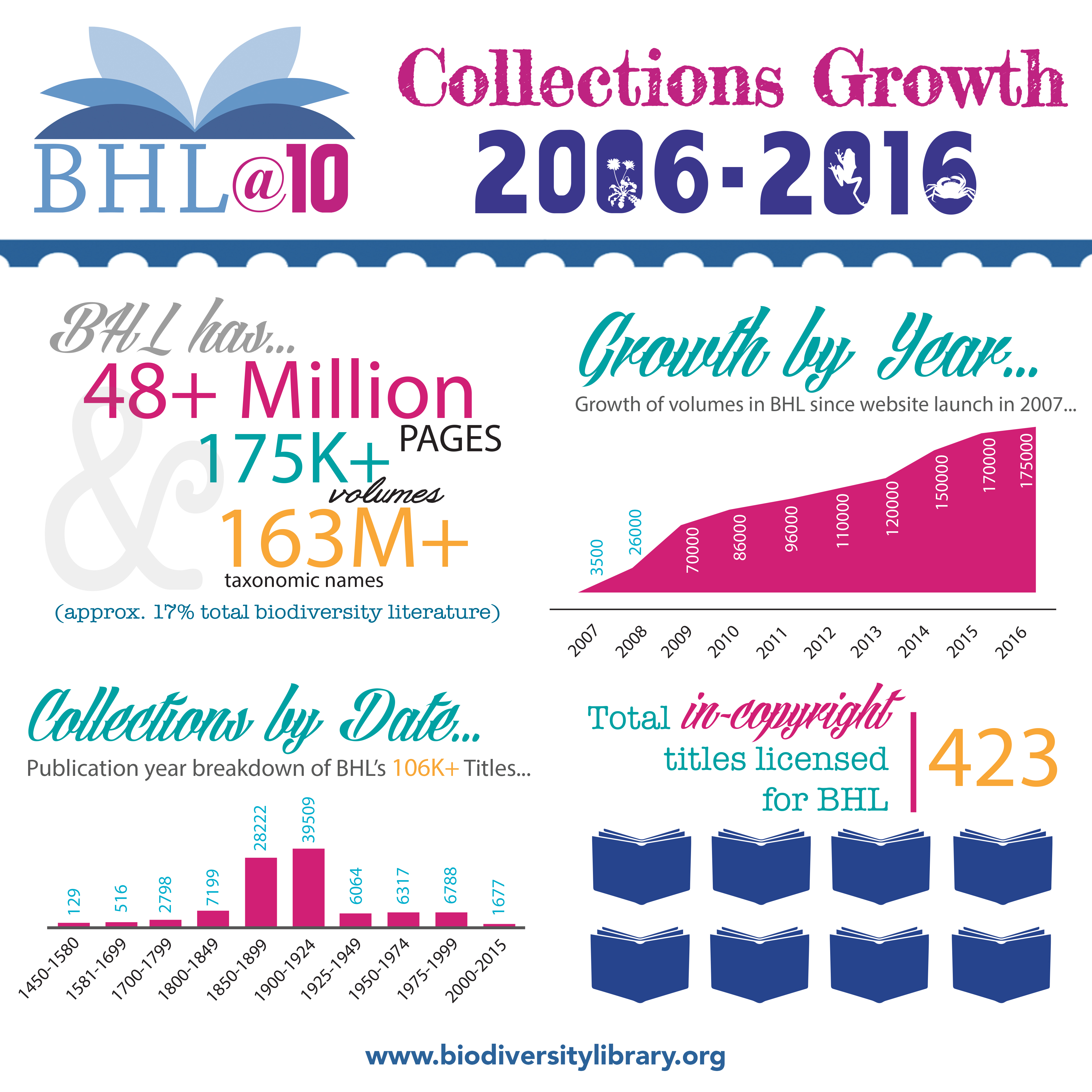
Over the past ten years, BHL's collections have grown to over 48 million pages, comprising over 175,000 volumes and 106,000 titles - all freely available to anyone, anywhere in the world! We've also grown from an initial partnership of 10 libraries in the U.S. and the U.K. to over 60 Members, Affiliates, and Partners on every continent (except Antarctica). As part of our celebration, explore our content and partners through subcollections that tie into our 10th anniversary theme.
Top 10 Viewed Books in BHL
- Systema naturae per regna tria naturae, v. 1
- Annales de l'Institut océanographique, v. 6
- Dictionnaire d'histoire naturelle, qui concerne les testacées ou les coquillages de mer, de terre & d'eau-douce, t. 2
- Latreille's Naturliche Familien des Thierreichs
- Taxonomic literature, v. 1
- Caroli Linnaei ... Species plantarum, v. 1
- Das Pflanzenreich :regni vegetablilis conspectus, heft 1
- Nomenclator botanicus, seu, Synonymia plantarum universalis
- Caroli Linnaei ... Species plantarum, v. 2
- Bulletin of the British Museum (Natural History), v. 5
Top 10 Downloaded Books in BHL
- Bergey's manual of determinative bacteriology
- America : being the latest, and most accurate description of the New World
- Insects, their ways and means of living
- On growth and form
- Fish hatchery management
- Plant names, scientific and popular, including in the case of each plant the correct botanical name in accordance with the reformed nomenclature, together with botanical and popular synonyms
- Poultry diseases, causes, symptoms and treatment, with notes on post-mortem examinations
- A text-book of entomology, including the anatomy, physiology, embryology and metamorphoses of insects, for use in agricultural and technical schools and colleges as well as by the working entomologist
- Birds in legend, fable and folklore
- The art of scientific investigation
Top Content Contributed from each BHL Member & Affiliate
View our book collection of the top downloaded book from each of our Members & Affiliates.
Browse our Members & Affiliates' top viewed Flickr albums (slideshow of images from these albums below).
Explore selections from our Members & Affiliates' top-viewed Flickr albums in Pinterest.
Get the flash player here: https://www.adobe.com/flashplayer
A Look Back: Highlights from BHL's History
 (Click to Enlarge)
(Click to Enlarge)
The Biodiversity Heritage Library was created to address a major obstacle to scientific research: lack of access to natural history literature. This literature underpins the work of researchers around the world by providing species data and descriptions, ecosystem profiles, distribution maps, inter-dependency observations, geological and climatic records, and more. At a 2003 meeting funded by The Andrew W. Mellon Foundation, scientists stated that providing free, online access to this literature would greatly improve the efficiency of research worldwide.
The following year, the 2004 Telluride Institute symposium proposed the creation of the Encyclopedia of Life and led to the 2005 meeting “Library and Laboratory: The Marriage of Research, Data, and Taxonomic Literature” organized by the Consortium for the Barcode of Life (with support from the Alfred P. Sloan Foundation and the National Biological Information Infrastructure of the US Geological Survey) at the Natural History Museum in London. Discussions at this meeting led to an organizational meeting at the Smithsonian Libraries in 2006, during which the Biodiversity Heritage Library was officially formed.
At the time of its formation, BHL included ten member organizations in the U.S. and the U.K. Tom Garnett, then Associate Director of Smithsonian Libraries, was named Program Director of BHL in 2007. The Smithsonian also assumed administrative responsibility for the program, establishing the BHL Secretariat. The Missouri Botanical Garden took on the program’s technical operations under Chris Freeland’s guidance as BHL’s Technical Director. Martin R. Kalfatovic, Associate Director of Digital Programs and Initiatives at Smithsonian Libraries and BHL’s current Program Director, took on the BHL directorial role after Garnett’s retirement in 2012. William Ulate served as Technical Director from 2012-2015, following Freeland’s departure from the Missouri Botanical Garden. Today, BHL’s technical development is led by a team of Technical Advisors comprised of staff from BHL’s Member institutions under the direction of Kalfatovic.
Initial funding for BHL came from a variety of sources. In 2006, the Richard Lounsbery Foundation provided funding for the creation of a Union Catalog necessary to support mass digitization work. Substantial funding also came from a MacArthur Foundation grant awarded to the Encyclopedia of Life (EOL). BHL was included in the grant to serve as the literature digitization component of EOL. This funding supported mass digitization of the library collections at BHL’s member organizations and provided technical and personnel support. The Internet Archive was selected as BHL’s digitization partner thanks to their non-profit status, technical expertise, infrastructural support, and scanning centers located in close proximity to BHL’s partners.
In 2007, the BHL website launched with just over 300 titles, largely comprised of collections already digitized by BHL’s Members. Over the ten years since its formation, BHL’s collections have grown to over 48 million pages, constituting over 175,000 volumes and over 106,000 titles. Collections have also grown to include not just published literature but scientists’ field notes and correspondence as well. Since its launch, BHL has served over 4.9 million people in 240 countries and territories. On average, BHL receives more than 161,000 visits per month, constituting over 9.4 million visits over the library’s lifetime. Additionally, BHL has made over 100,000 of the illustrations within its collection available in Flickr, which in turn have been viewed over 161 million times.
BHL’s consortium has also grown to include 15 Members, 10 Affiliates, and Global Partners around the world. BHL’s first Global Partner was BHL Europe, which was established as part of the European eContentplus programme in January 2009 with 26 participating European institutions. That December, BHL Egypt was established in partnership with the Bibliotheca Alexandrina as a result of EOL’s international collaborations. One month later, in January 2010, the Chinese Academy of Sciences established BHL China through the CAS Institute of Botany. In June of that year, as an outgrowth of the Atlas of Living Australia, BHL Australia was formed under the leadership of Museum Victoria. BHL Australia’s website served as the model for the current BHL website, with which the Australian portal has since merged. In December 2010, BHL SciELO was established in Brazil as BHL’s first representative in South America. In 2013, thanks to funding from the JRS Biodiversity Foundation, BHL Africa was established, bringing to date representation from 11 institutions throughout sub-Saharan Africa. BHL’s newest global partners, who have also both joined BHL as Members, are BHL Singapore and BHL Mexico. Both joined in 2014. BHL Singapore was established in partnership with the National Library Board, Singapore. BHL Mexico is headed by the Comisión Nacional para el Conocimiento y Uso de la Biodiversidad (CONABIO), who has since coordinated the participation of multiple institutions throughout Mexico. BHL’s global partners share protocols and best practices and are working to integrate content from each partner into the central BHL repository at www.biodiversitylibrary.org.
With the conclusion of the MacArthur funding in 2013, the program has moved to a sustainable funding model that includes Member and Affiliates fees, institutional funding, in-kind support, and donations. Furthermore, several other funding agencies have and continue to support BHL’s work through grants, including the Institute for Museum and Library Services (IMLS), the National Endowment for the Humanities (NEH), the Gordon and Betty Moore Foundation, the Mellon Foundation, the National Science Foundation (NSF), and the Council on Library and Information Resources (CLIR).
Over the past ten years, the Biodiversity Heritage Library has become the world’s largest open access digital library for biodiversity literature. It now serves as a standard for taxonomic literature aggregation, discovery and presentation as well as a model for other digital library initiatives. By engaging with the scientific community to identify user needs, incorporating tools that facilitate data discovery and reuse, and continuing to grow collections under open access principles by fostering existing and establishing new partnerships with libraries and data providers around the world, BHL has become an unparalleled resource that is transforming the way scientists, researchers, and the public understand and study the natural world.
Explore more of BHL's history in the 2013 Ithaka S+R Case Study.